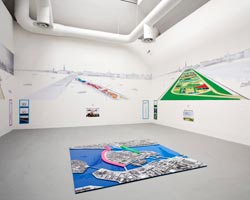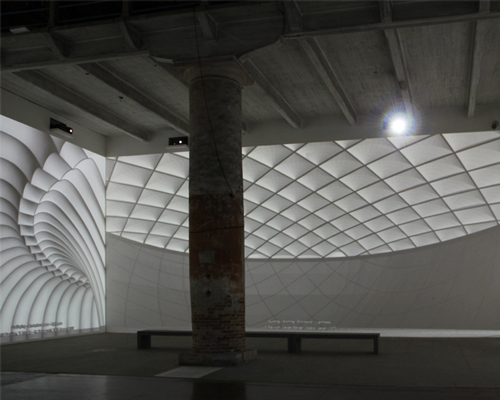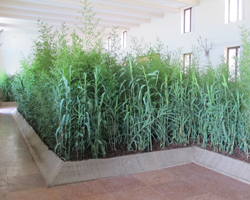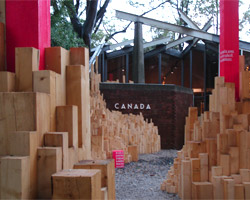KEEP UP WITH OUR DAILY AND WEEKLY NEWSLETTERS
PRODUCT LIBRARY
the apartments shift positions from floor to floor, varying between 90 sqm and 110 sqm.
the house is clad in a rusted metal skin, while the interiors evoke a unified color palette of sand and terracotta.
designing this colorful bogotá school, heatherwick studio takes influence from colombia's indigenous basket weaving.
read our interview with the japanese artist as she takes us on a visual tour of her first architectural endeavor, which she describes as 'a space of contemplation'.
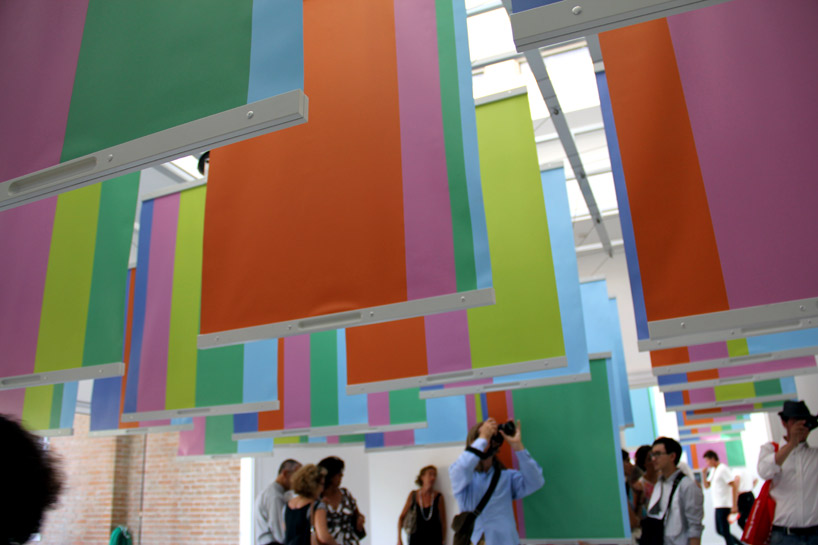
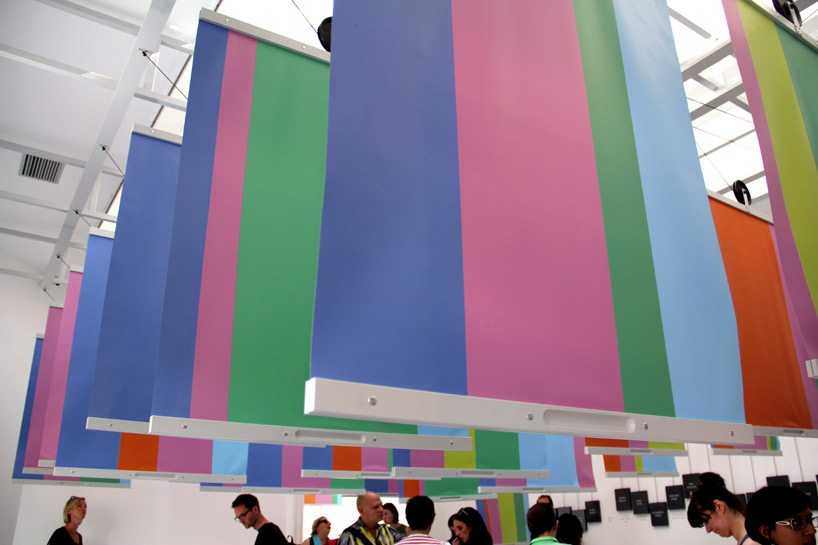 freecell created a lively system of banners suspended from an open scaffold, evoking a festival atmosphere. the banners may be pulled down for a clos- er look, triggering the movement of counterweights that are in- scribed with suggested actions to solve urban problems. image © designboom
freecell created a lively system of banners suspended from an open scaffold, evoking a festival atmosphere. the banners may be pulled down for a clos- er look, triggering the movement of counterweights that are in- scribed with suggested actions to solve urban problems. image © designboom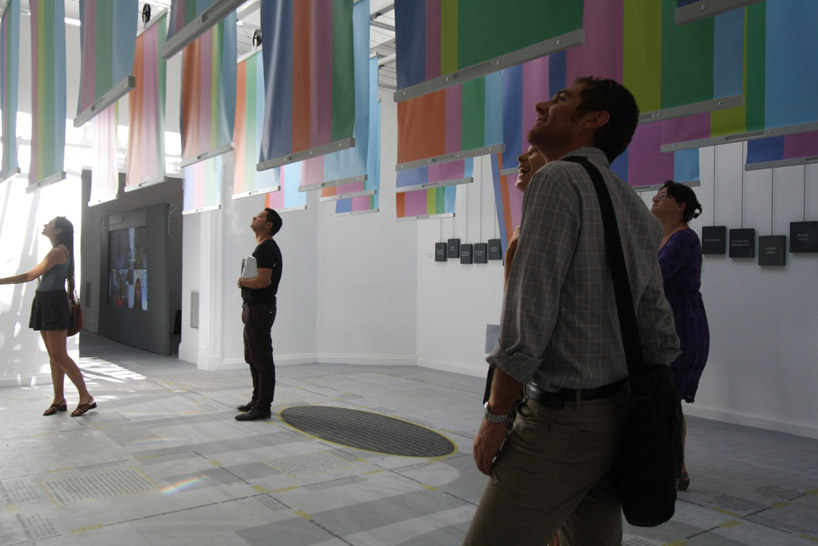 image courtesy of freecell
image courtesy of freecell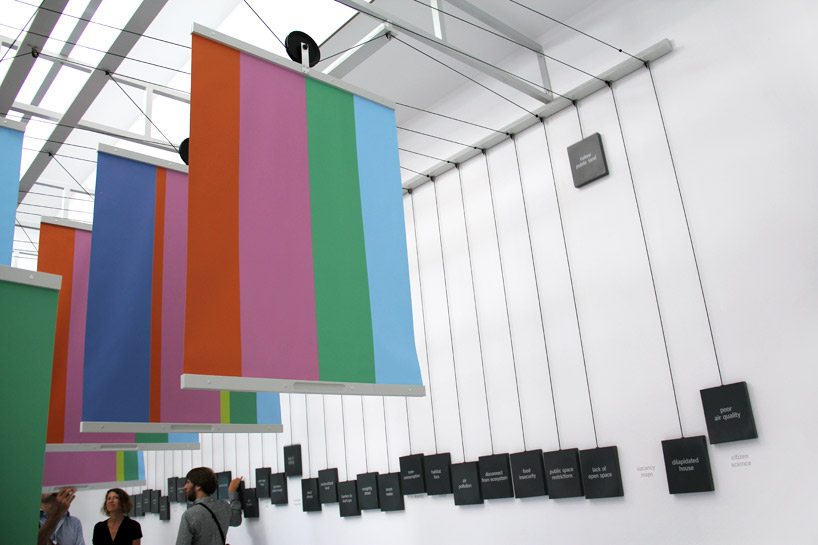 banners are connected to counterweights through a pully system image © designboom
banners are connected to counterweights through a pully system image © designboom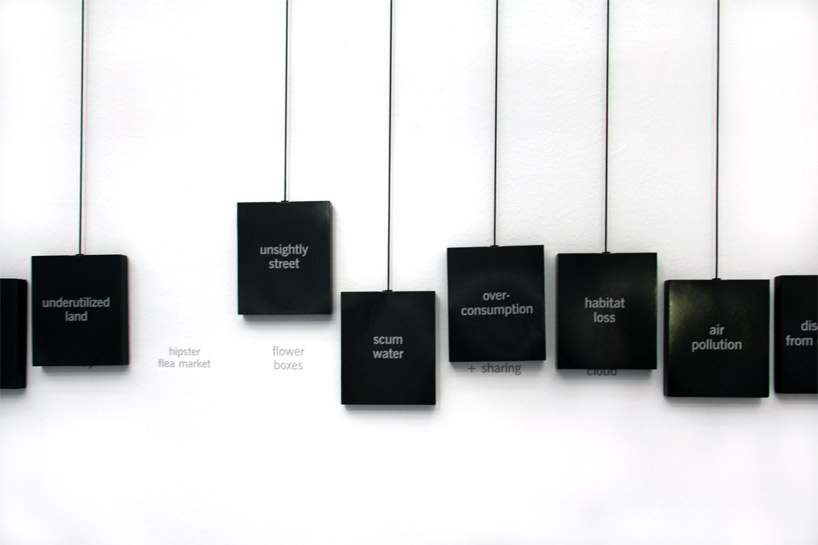
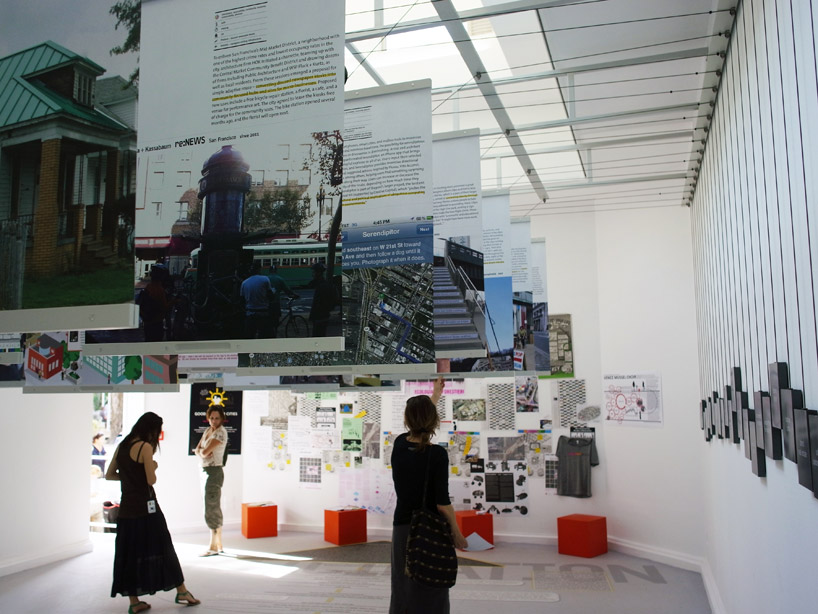 frontside of banners image © designboom
frontside of banners image © designboom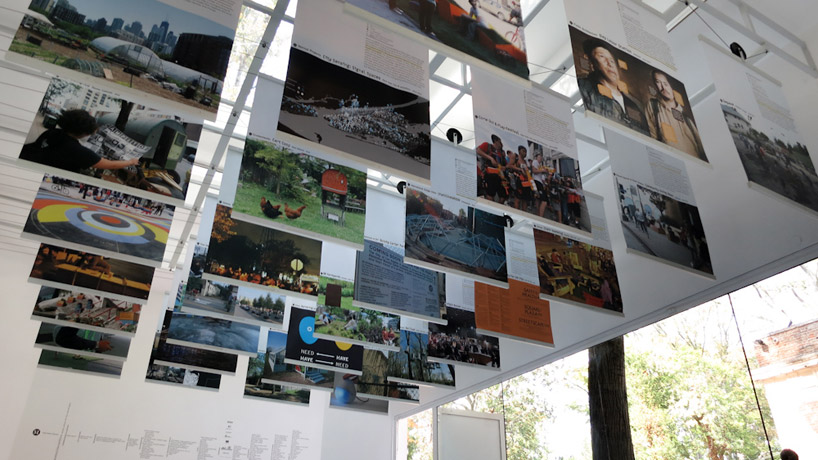 image courtesy of freecell
image courtesy of freecell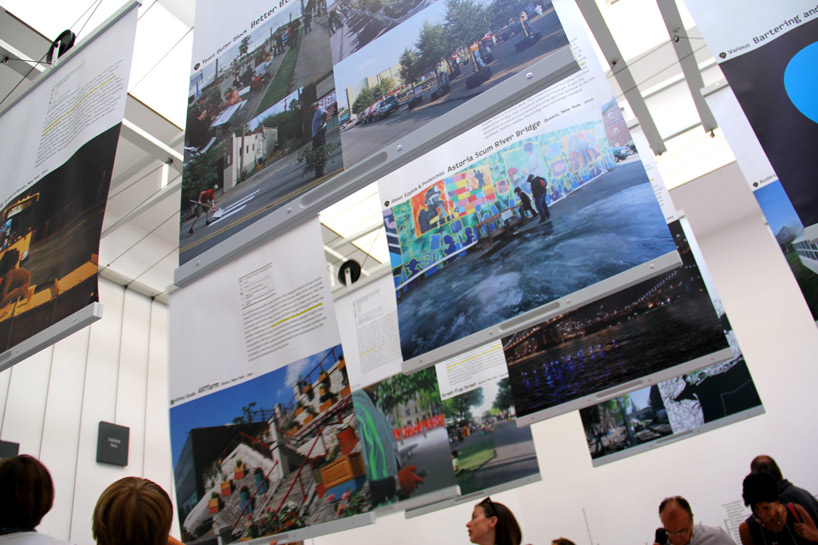 image © designboom
image © designboom image © designboom
image © designboom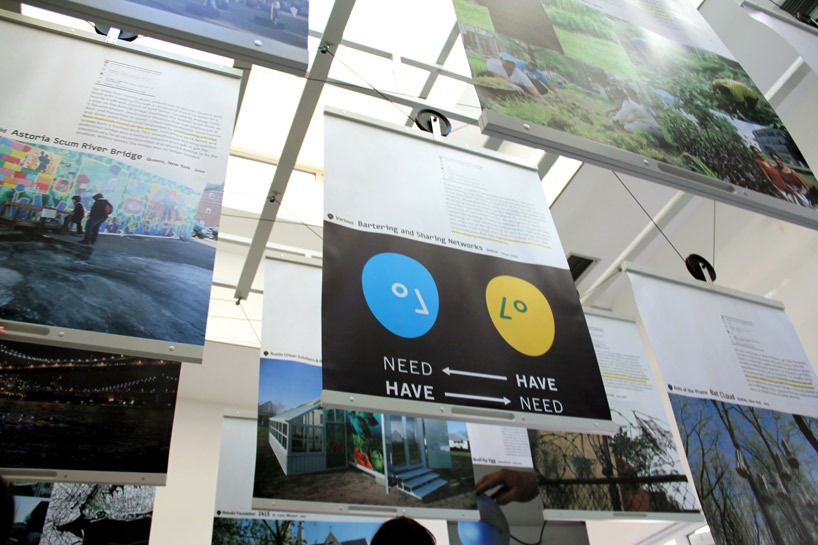 124 urban intervention projects presented on banners image © designboom
124 urban intervention projects presented on banners image © designboom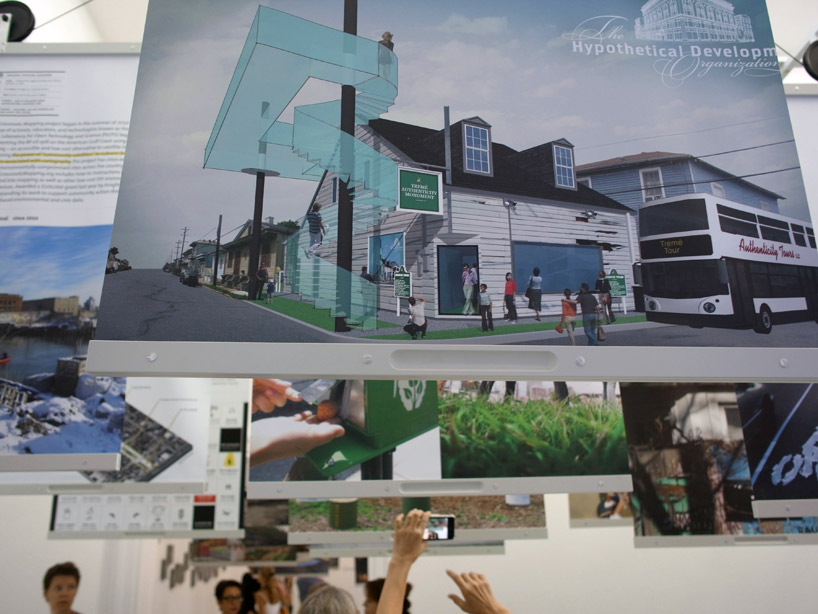 backside of banners image © designboom
backside of banners image © designboom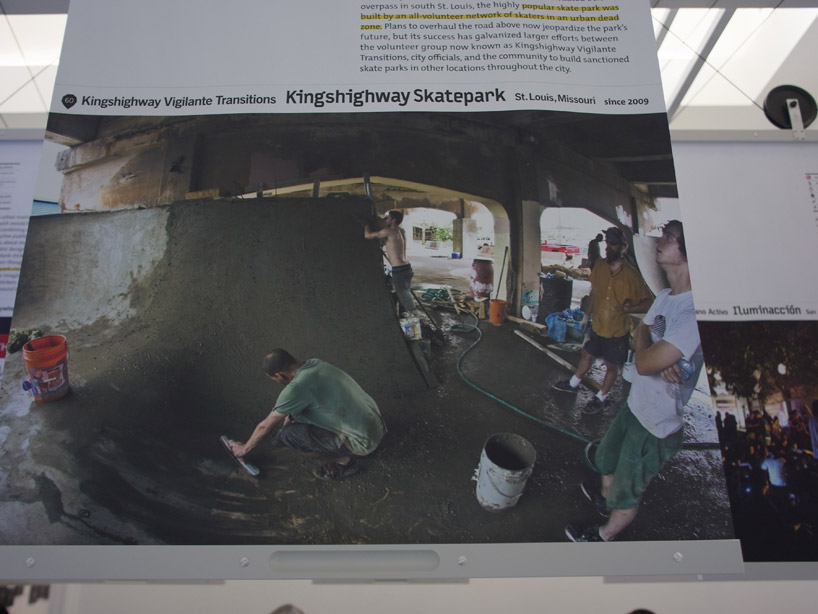 detail of a project on a banner image © designboom
detail of a project on a banner image © designboom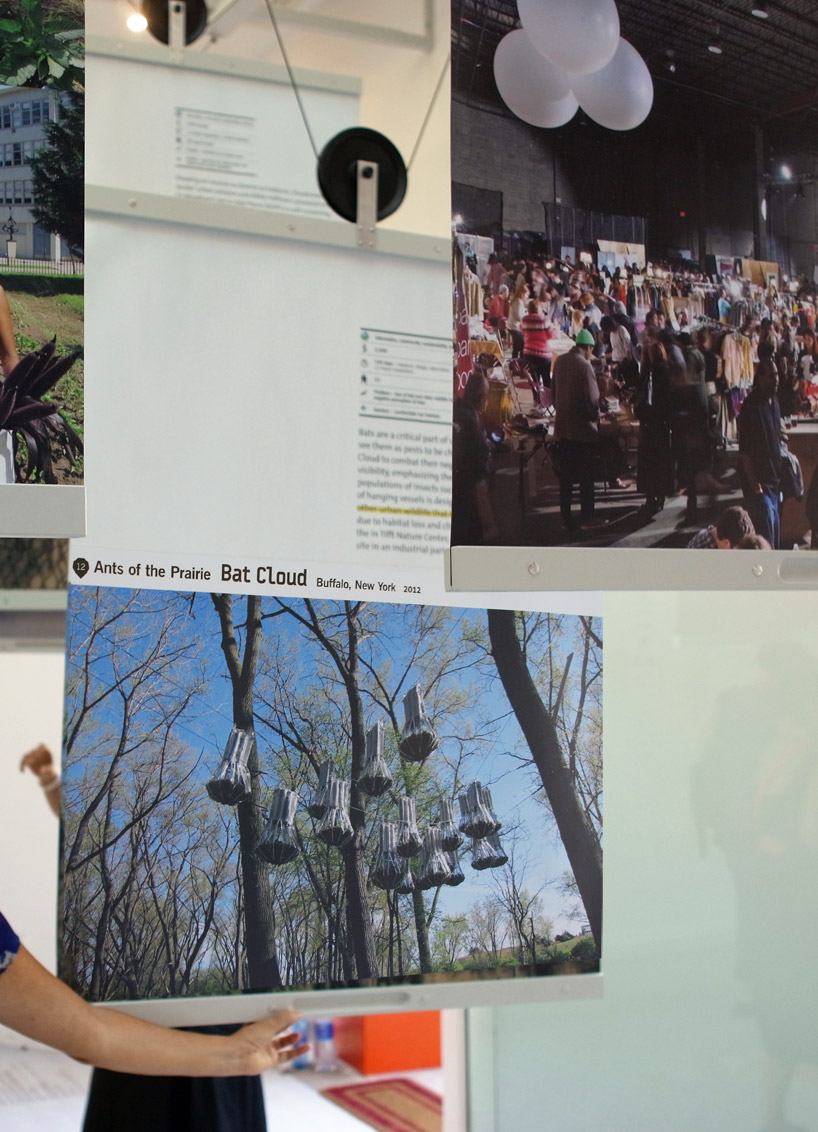 individual panels can be pulled down for further inspection image © designboom
individual panels can be pulled down for further inspection image © designboom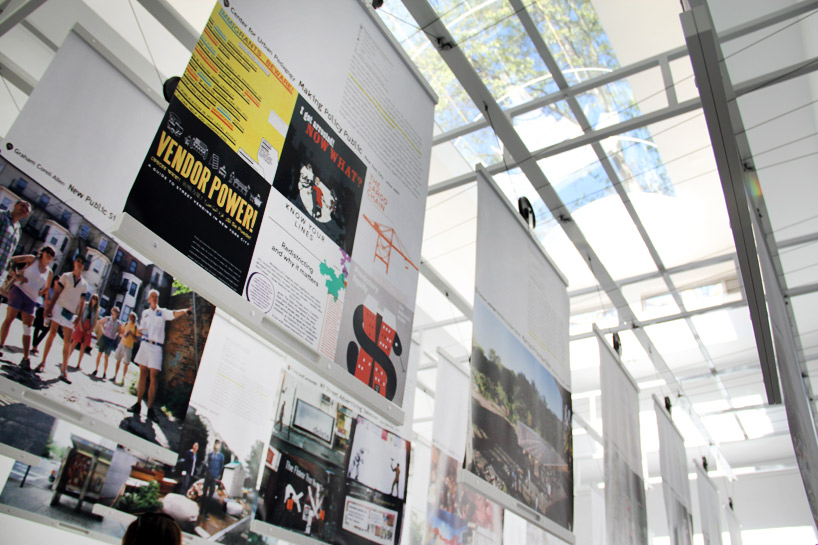
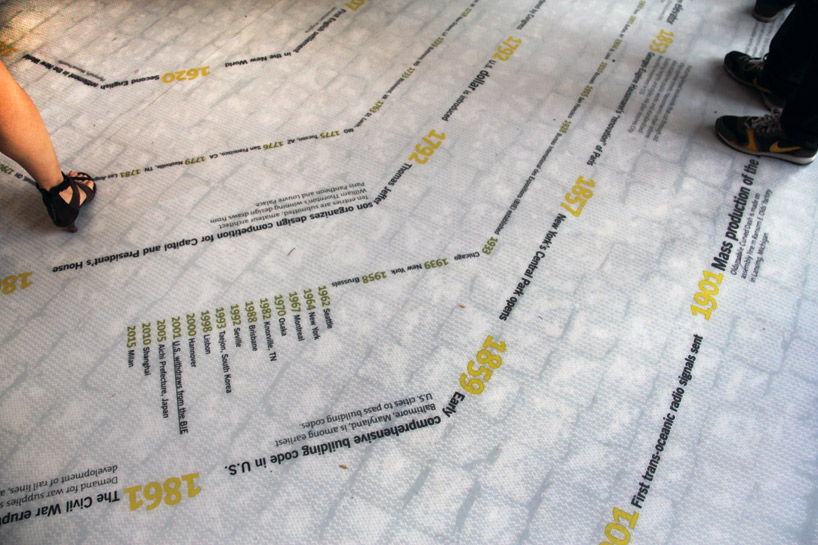 wending across the gallery floors is a timeline that narrates the history of city- making as well as key precedents in urban activism. M-A-D designed a timeline that alters in shape as it advances, reflecting the ideas of each dominant epoch. today’s urban interventions are reacting to spe- cific conditions that have been de- cades, even centuries, in the mak- ing, informed by complex physical and cultural circumstances. image © designboom
wending across the gallery floors is a timeline that narrates the history of city- making as well as key precedents in urban activism. M-A-D designed a timeline that alters in shape as it advances, reflecting the ideas of each dominant epoch. today’s urban interventions are reacting to spe- cific conditions that have been de- cades, even centuries, in the mak- ing, informed by complex physical and cultural circumstances. image © designboom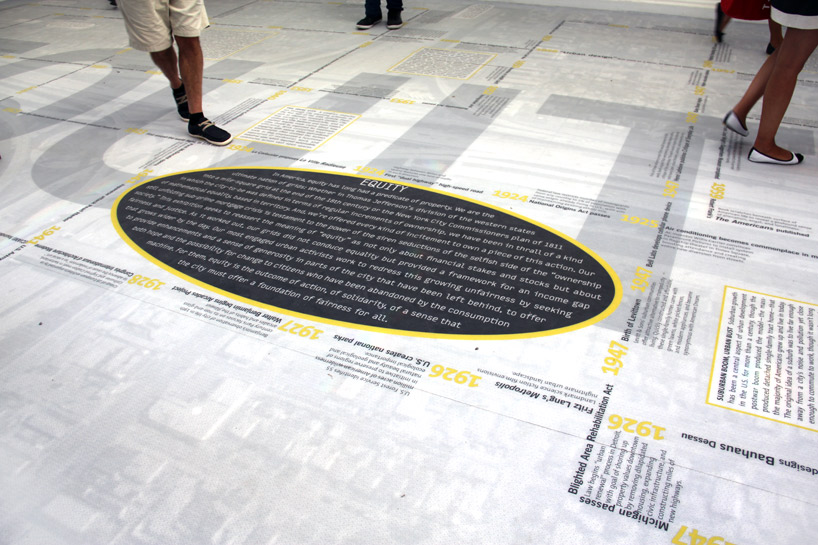 infographic on floor image © designboom
infographic on floor image © designboom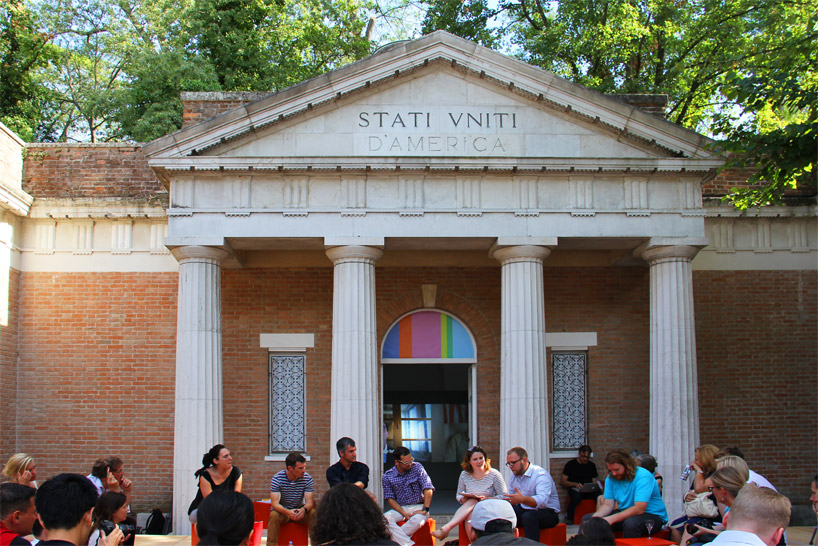 ‘commonplace’, features a conversation pit that is filled with foam cubes in- tended to be used for seating or playing. the pieces are configured to accommodate a range of functions, from lectures to workshops to casual socializing. their intention is to donate the cubes to a school when the biennale concludes. image © designboom
‘commonplace’, features a conversation pit that is filled with foam cubes in- tended to be used for seating or playing. the pieces are configured to accommodate a range of functions, from lectures to workshops to casual socializing. their intention is to donate the cubes to a school when the biennale concludes. image © designboom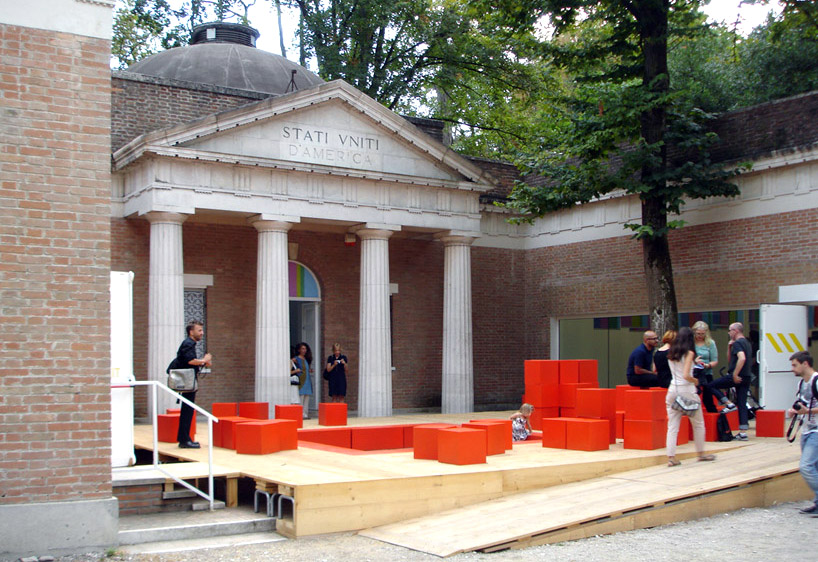 interboro borrowed a standard-issue item from the city of venice – the temporary, elevated sidewalks called passerelle that venetians use to navigate venice during acqua alta – to create an ‘outdoor living room / commonplace’ to host programs scheduled for the biennale’s three-month run. image © designboom
interboro borrowed a standard-issue item from the city of venice – the temporary, elevated sidewalks called passerelle that venetians use to navigate venice during acqua alta – to create an ‘outdoor living room / commonplace’ to host programs scheduled for the biennale’s three-month run. image © designboom